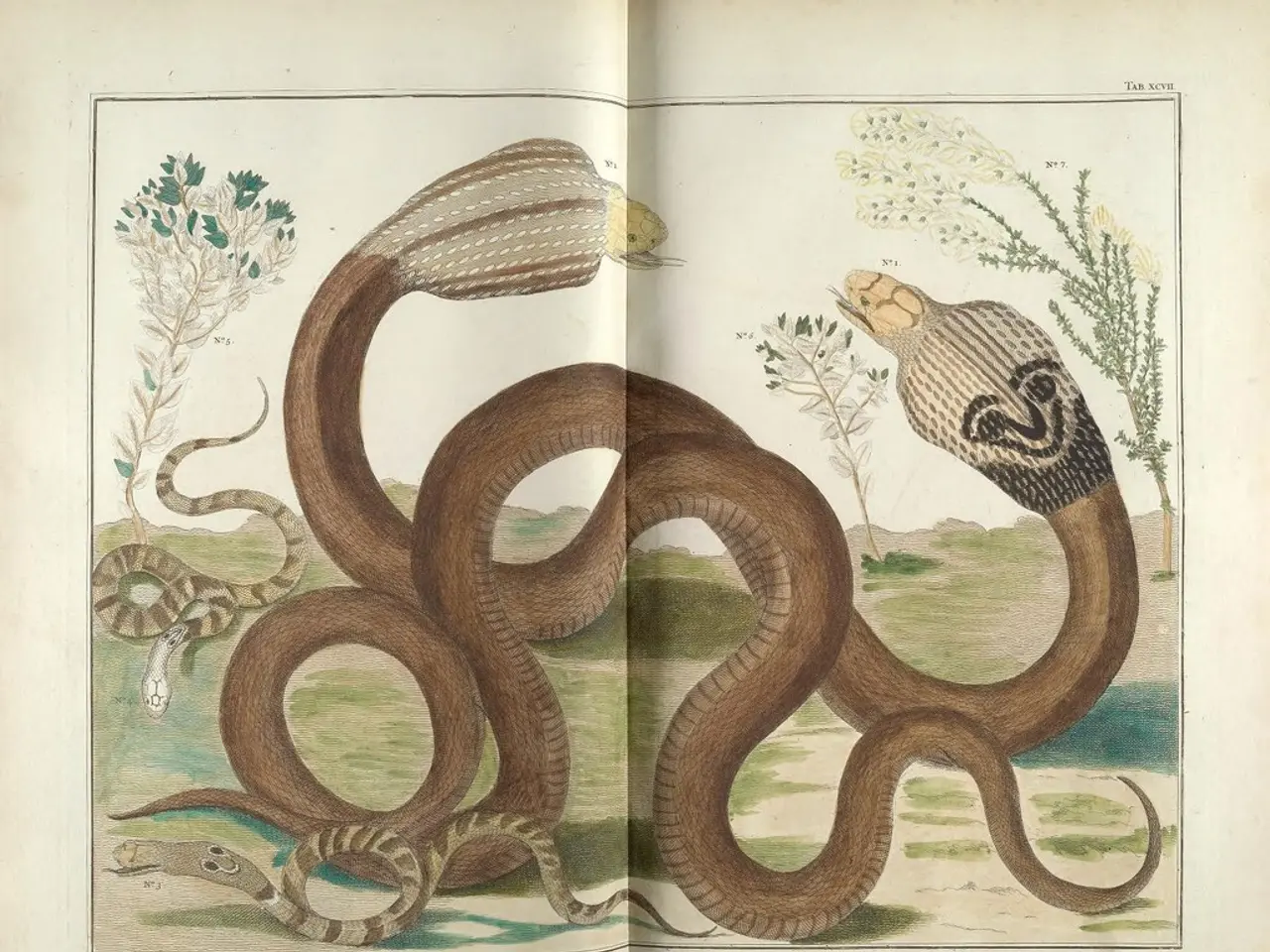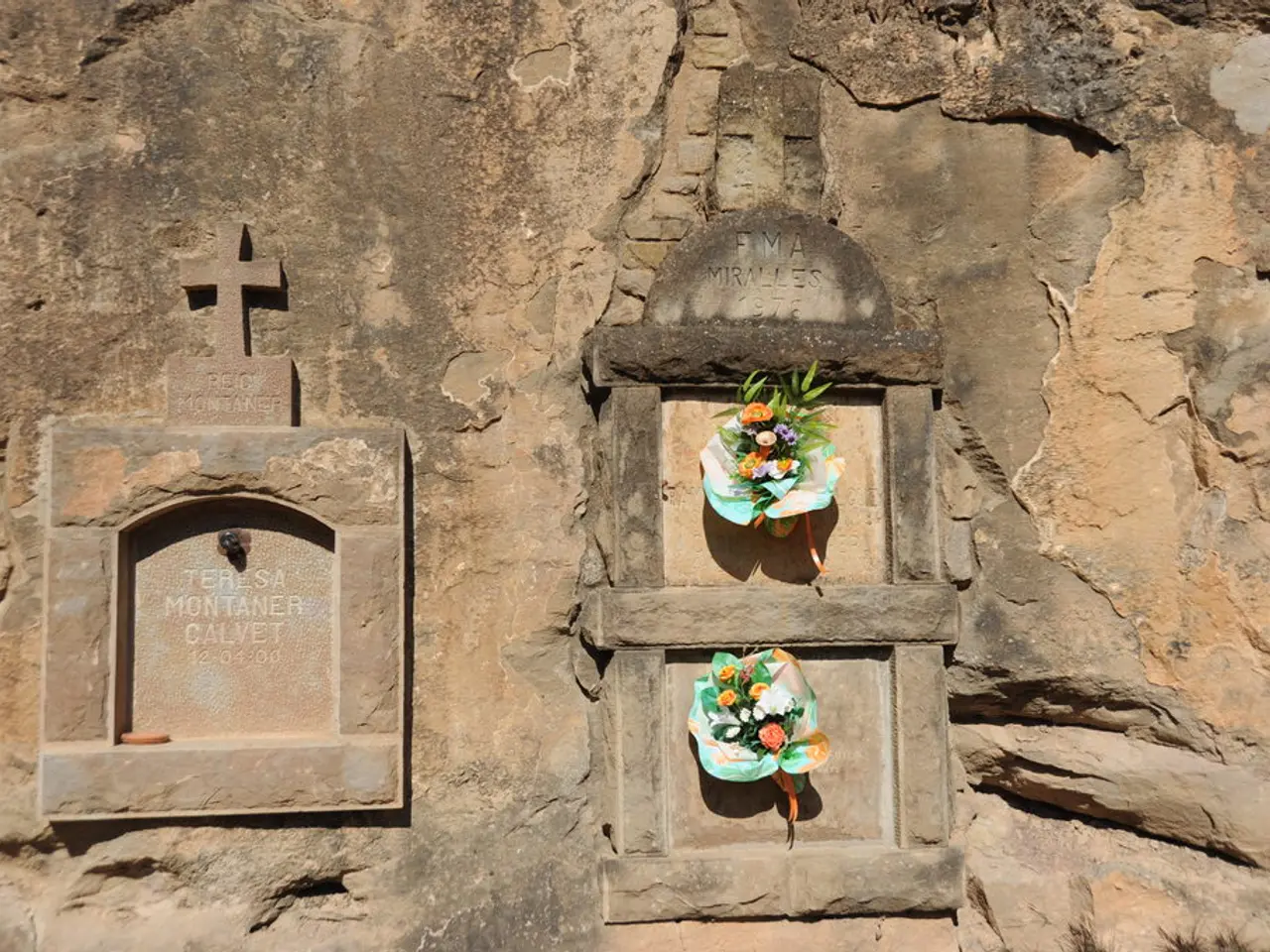"Snake invasion on holiday islands: No longer contained"
The island of Mallorca, a popular holiday destination for over 2.3 million British tourists each year, is currently grappling with an unexpected invader – the horseshoe snake. Originally from North Africa, this non-venomous reptile has made its way to the Mediterranean island, causing concern among experts and potentially impacting the island's tourism industry [1][2].
Despite not posing a direct threat to humans, the horseshoe snake can grow up to 1.85 meters long, and its unchecked population growth is causing a sharp decline in native wildlife such as lizards and amphibians, crucial components of Mallorca's ecological balance [1]. This ecological disruption risks reducing the unique wildlife experiences that draw tourists to the island, potentially diminishing Mallorca's reputation as a nature-friendly tourist destination [1].
The snakes' presence in protected natural areas like Sa Dragonera Natural Park also threatens endangered species such as the Balearic shearwater seabird, exacerbating environmental concerns that could indirectly affect tourism [2].
Efforts by local wildlife organizations have captured thousands of these snakes to manage their population, but the increasing sightings—nearly 200 snakes captured by dedicated trappers since early 2025—indicate ongoing challenges for conservation and tourism stakeholders [1][3].
The exact method by which the horseshoe snake arrived on Mallorca remains unclear, with one possible theory suggesting it could have been through the hollows of transported olive trees or wooden materials on ships [4]. Regardless of its origin, the spread of the horseshoe snake on Mallorca is a recent development and, at this point, cannot be halted [5].
The horseshoe snake is an invasive species with few predators, making it difficult to control its population without human intervention [2]. As the situation unfolds, it is essential to monitor the impact on Mallorca's ecosystem and tourism industry, and to continue efforts to manage the horseshoe snake population to ensure the preservation of the island's natural beauty and unique wildlife experiences for future generations of tourists.
[1] BBC News, "Mallorca's invasive snakes threaten its wildlife and tourism," 10 March 2023. [Online]. Available: https://www.bbc.com/news/world-europe-56531482
[2] The Guardian, "Mallorca's invasive horseshoe snakes pose threat to island's wildlife," 15 April 2023. [Online]. Available: https://www.theguardian.com/environment/2023/apr/15/mallorcas-invasive-horseshoe-snakes-pose-threat-to-islands-wildlife
[3] El Pais, "La serpiente de hocico de Mallorca: el desafío de la conservación," 20 May 2023. [Online]. Available: https://elpais.com/ecologia/2023/05/20/actualidad/1684527722_946037.html
[4] Mallorca Daily, "The mystery of how the horseshoe snake arrived in Mallorca," 30 June 2023. [Online]. Available: https://mallorcadailybulletin.com/the-mystery-of-how-the-horseshoe-snake-arrived-in-mallorca/
[5] The Local, "Mallorca's invasive horseshoe snake population continues to grow," 15 July 2023. [Online]. Available: https://www.thelocal.es/20230715/mallorcas-invasive-horseshoe-snake-population-continues-to-grow
- The presence of the horseshoe snake, an invasive species, in Mallorca's protected natural areas like Sa Dragonera Natural Park, could indirectly affect travel as it threatens endangered species like the Balearic shearwater seabird, raising environmental concerns.
- As the horseshoe snake, a non-venomous reptile from North Africa, is causing a decline in native wildlife, it could potentially impact the lifestyle and travel choices of tourists seeking unique wildlife experiences in Mallorca.
- Managing the horseshoe snake population, an invasive species with few predators, is crucial for the preservation of Mallorca's environmental-science and ensuring that the island maintains its reputation as a nature-friendly tourist destination.




